Part 1. Bring Original Characters to Life with Vidu Q1
"What if the character you drew could come to life and move vividly through animation…"
It's a scene every creator has dreamed of at least once.
The arrival of video generation AI raised hopes that this dream could become a reality.
But what many creators were confronted with instead was the nightmare of "my original character being turned into someone else by AI." Shock.
With every generation, the face would change. The limbs would collapse. No matter how many times you tried again, the character you envisioned was nowhere to be found.
Because of this major hurdle of so-called character collapse, many people may have started to give up, thinking, "It's still impossible to make anime with AI."

However, that common belief may soon be a thing of the past.
A groundbreaking feature included in the video generation AI "Vidu Q1" puts an end to this long-standing problem.
It's a breakthrough that allows creators to take full control of AI, breathing life into their own characters while preserving complete consistency!
In this article, I'll show you the original anime I actually created—"Two Babies"—using this feature. Along the way, I'll thoroughly explain, with concrete prompt examples, how anyone can easily produce high-quality original character animations.
Part 2. The Breakthrough Brought by Vidu Q1: The Light of the High-Resolution Reference Feature
What dramatically transformed the nightmare of "my character being turned into someone else by AI" was the high-resolution reference feature built into Vidu Q1.
The mechanism behind this function is extremely simple:
You provide the AI with a reference image that serves as a model, essentially telling it, "Make this character move, in this style." That's all it takes.
Vidu's AI extracts a character's defining features from the provided reference image with remarkable precision—the hair color and style, eye shape, clothing, and even the overall artistic touch. It then generates an animation that follows the instructions given in the prompt (such as movement, expressions, and situations), all while preserving those features.
This has led to solutions for many of the challenges mentioned earlier:
- Overwhelming character consistency: Because the reference image serves as an absolute standard, the same character appears no matter how many times you generate it. Freed from the fear of "character collapse," creators can now focus with confidence on bringing their stories to life.
- Significant reduction of distortions: Since the AI strives to preserve the style and look of the reference image, unnatural breakdowns in detail have been greatly reduced. While not completely eliminated, the stability is now on a level incomparable to what it used to be.
- Expressive faces and smooth motion: The AI interprets how the character from the reference image would laugh or get angry within that style, and expresses it accordingly. As a result, the animations now convey very natural, emotionally rich expressions and movements without undermining the character's individuality.
This is more than just a feature upgrade. It represents a revolutionary shift—transforming AI from an "uncontrollable, whimsical assistant" into a "skilled animator who actually listens to instructions."
Part 3. [In Practice] Bringing an Original Character to Life with Vidu Q1!
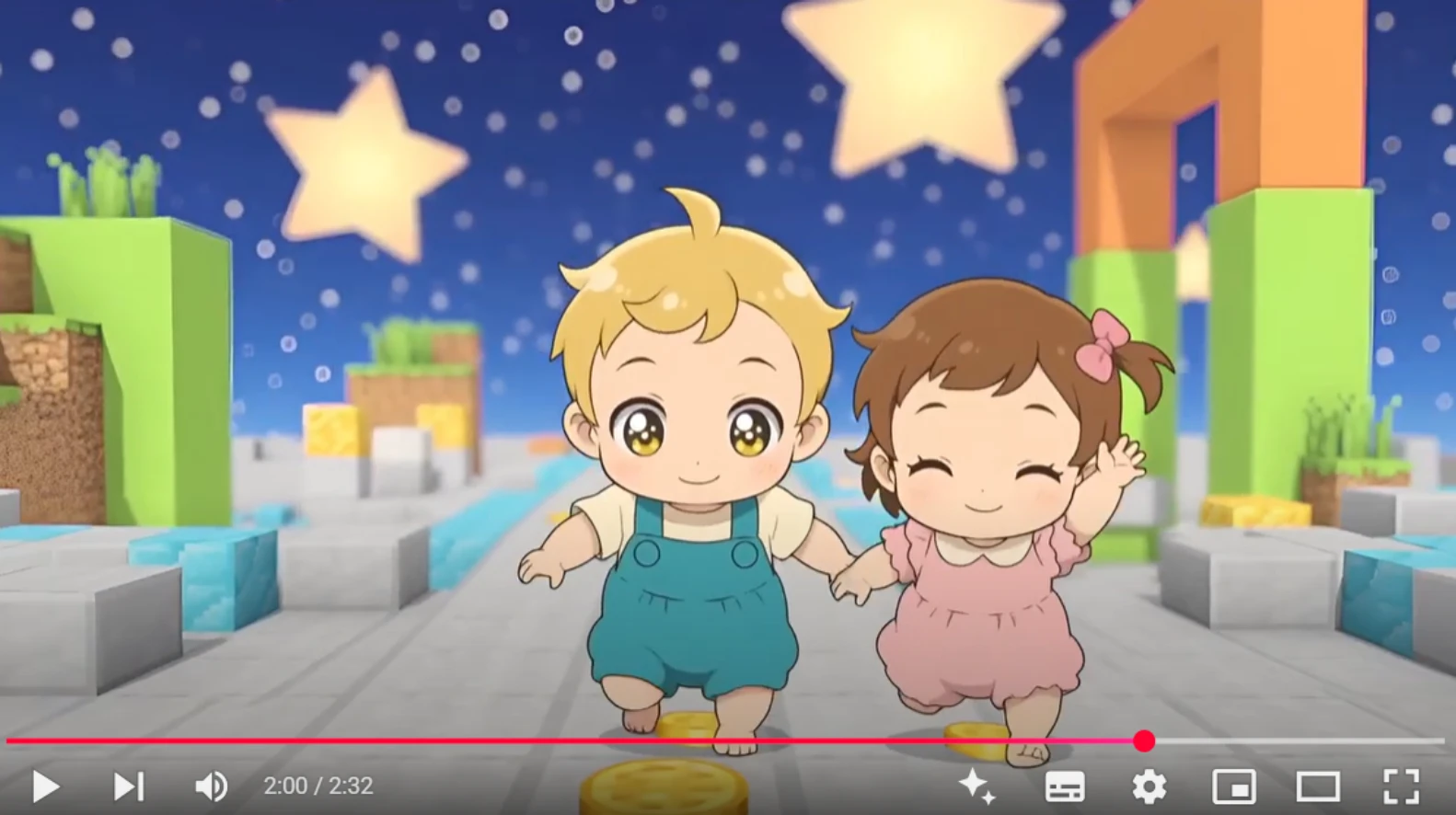
Theory aside, the fastest way to understand what this can really do is simply to see it in action. To test the potential of Vidu Q1's reference to video feature, I created an original 2D animation titled "Two Babies."
▶ https://youtu.be/Hs_w35E3BJs
In this section, I'll walk you through how this short animation was made and the creative choices behind it.
Why did I choose "Two Babies" as the theme?

This time, I chose "Two Babies" as the theme for several clear reasons. In fact, it was my own kind of experimental plan to test the capabilities of Vidu Q1.
Challenge 1: Diversity of Expressions
Babies are incredibly expressive and direct with their emotions. From beaming smiles to loud crying, surprise, or anger—their feelings are vividly reflected on their faces. This made them the perfect subject for testing how well Vidu Q1 could portray subtle variations in expression while maintaining the individuality of the character from the reference image.
Challenge 2: Interaction Between Multiple Characters
For AI, animating multiple characters at the same time in a natural way is an extremely difficult task. Characters often interfere with one another, blend together, or one character disappears altogether. By generating scenes of the two babies playing or even quarreling, I wanted to see how accurately Vidu Q1 could handle multi-character interactions.
Challenge 3: Consistency of Art Style
I prepared a simple yet distinctive character design and tested whether the art style and design would remain intact across various generated scenes. My goal was to see if the AI could properly recognize and reproduce a somewhat stylized, anime-like design without breaking it.
Through these challenges, I aimed to explore both the practical limits and the possibilities of Vidu Q1's reference feature.
Vidu Q1's reference feature is extremely powerful, but to get the most out of it, the quality of the input "reference image" is absolutely crucial. For "Two Babies," the reference images I prepared had the following characteristics:
When preparing reference images, I focus on these points:
- Clarify the character's features To make it easy for the AI to recognize the character, keep the background simple (white or a solid color) so the character stands out clearly. Higher resolution is always better.
- For 2D anime, use flat, cel-style coloring For 2D anime, preparing images with solid, flat colors helps prevent distortion during referencing. Conversely, subtle gradations or delicate shading tend to be harder for the AI to replicate accurately.
- (Optional) Provide angle variations This isn't mandatory, but if you want more advanced control, registering side or back views can help. For this project, I used one basic front-facing image for each of the male and female babies. Personally, for simple chibi-style characters, a single image is usually sufficient (unless the side or back has distinctive features).
By taking a little extra care in preparing reference images, the quality of the generated animation improves dramatically. If you want to bring your own original characters to life, it's worth investing the effort.
[Tutorial] How to Use Vidu Q1 Prompts & Reference Images
Now, let's dive into the actual production steps. Here, I'll show the combinations of reference images and prompts that I actually used to create "Two Babies." Pay attention to which parts of the prompt produce which effects—it can serve as a helpful guide for your own projects.
Baby crying at the beach
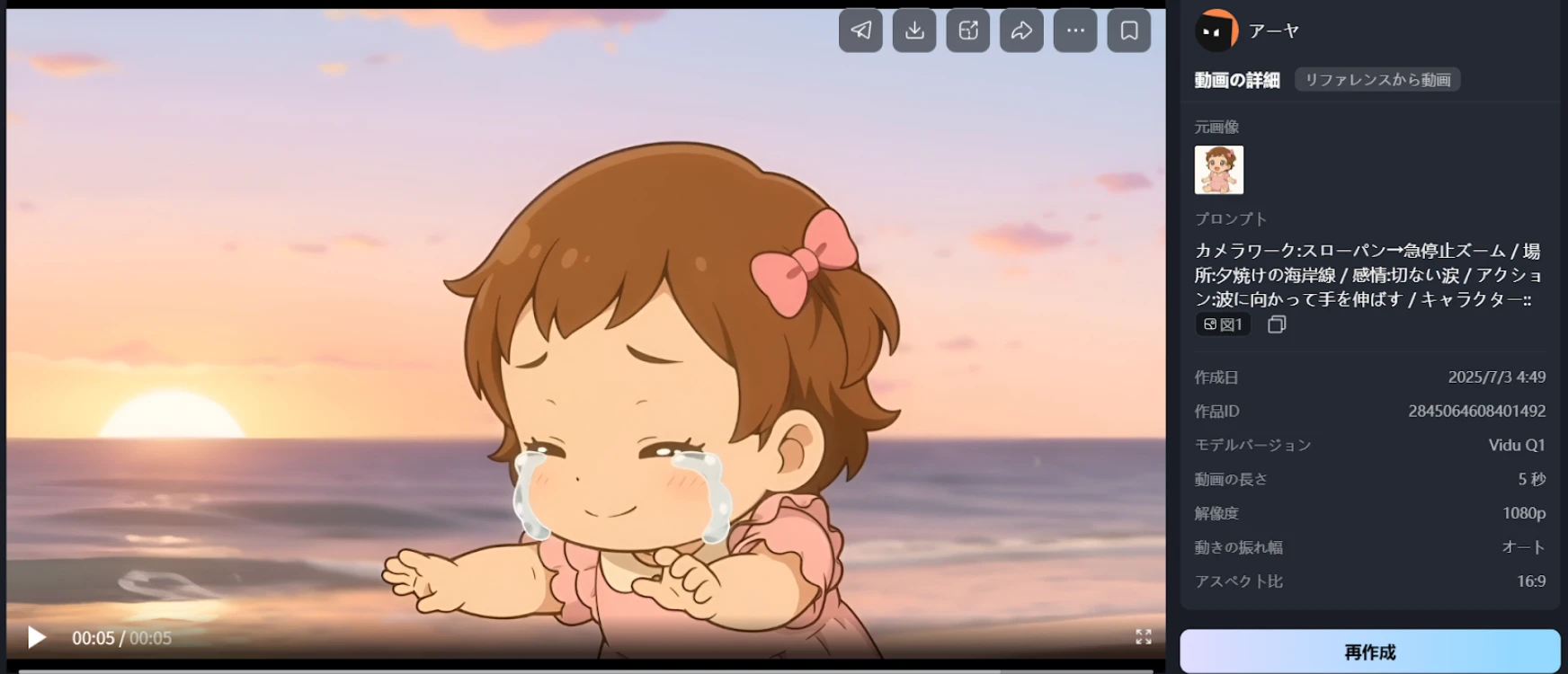
Prompt:
- Camera work: Slow pan → sudden stop zoom
- Location: Sunset coastline
- Emotion: Heart-wrenching tears
- Action: Reaching out toward the waves
- Character: [@image 1]
Baby racing on a racetrack
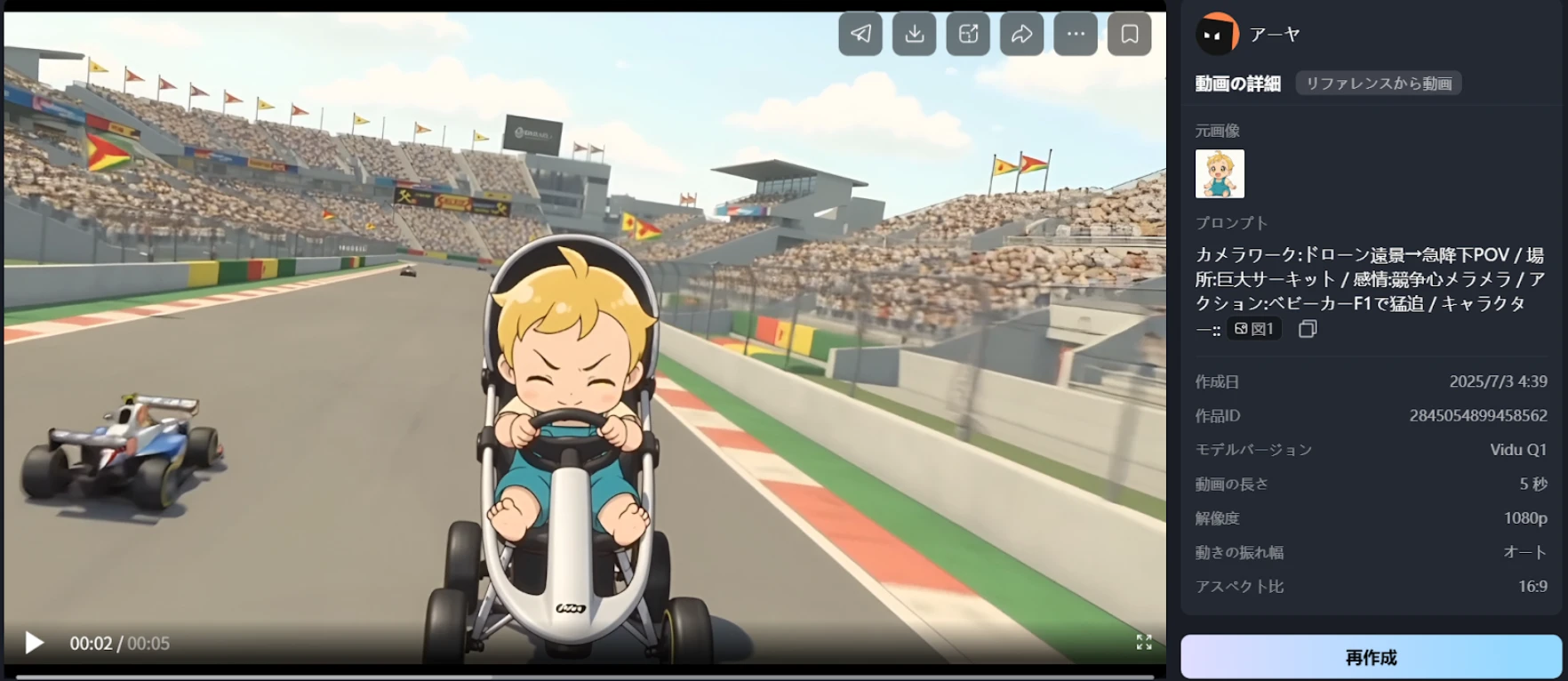
Prompt:
- Camera work: Drone long shot → sudden dive POV
- Location: Giant racetrack
- Emotion: Burning competitive spirit
- Action: Chasing fiercely in a stroller F1-style
- Character: [@image 1]
Baby excited in a library ceiling maze
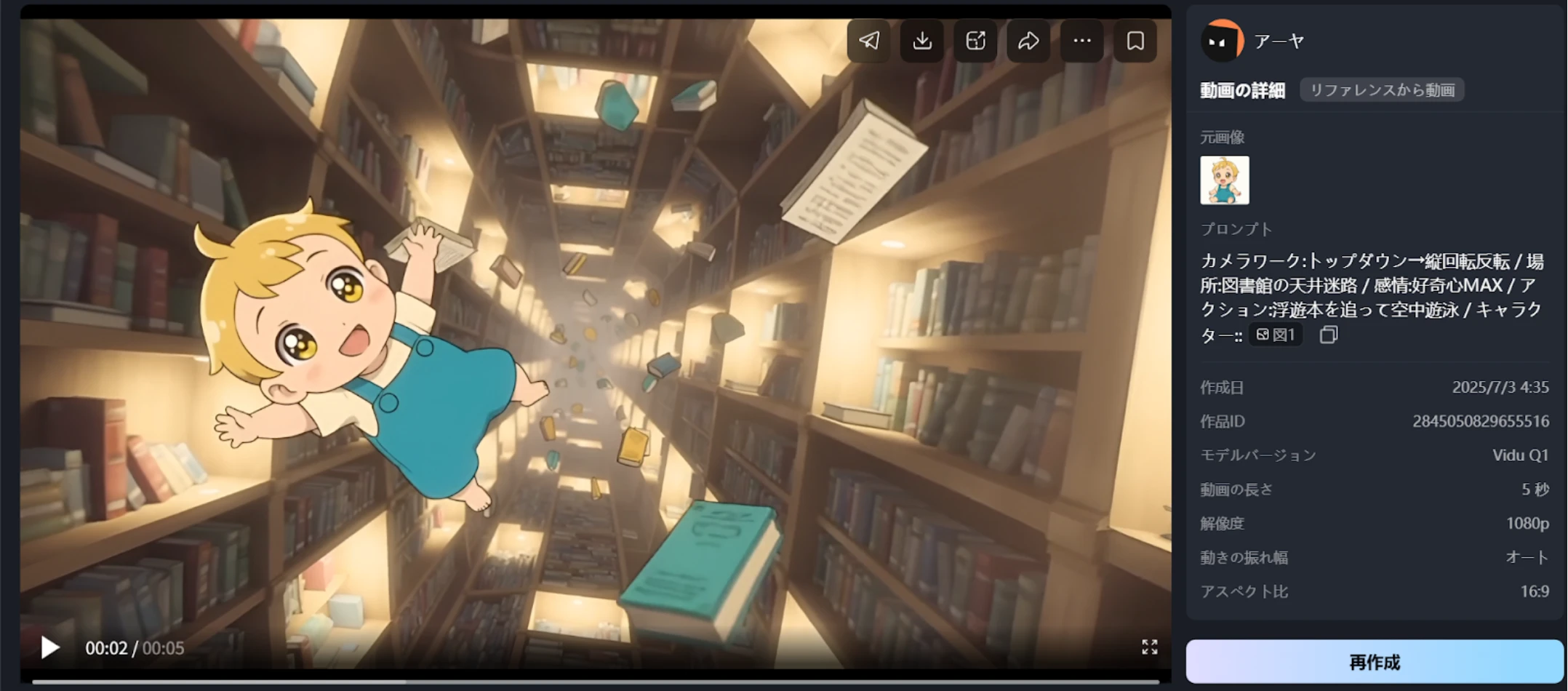
Prompt:
- Camera work: Top-down → vertical spin inversion
- Location: Library ceiling maze
- Emotion: Maximum curiosity
- Action: Swimming through the air, chasing floating books
- Character: [@image 1]
Baby is excited on the racetrack
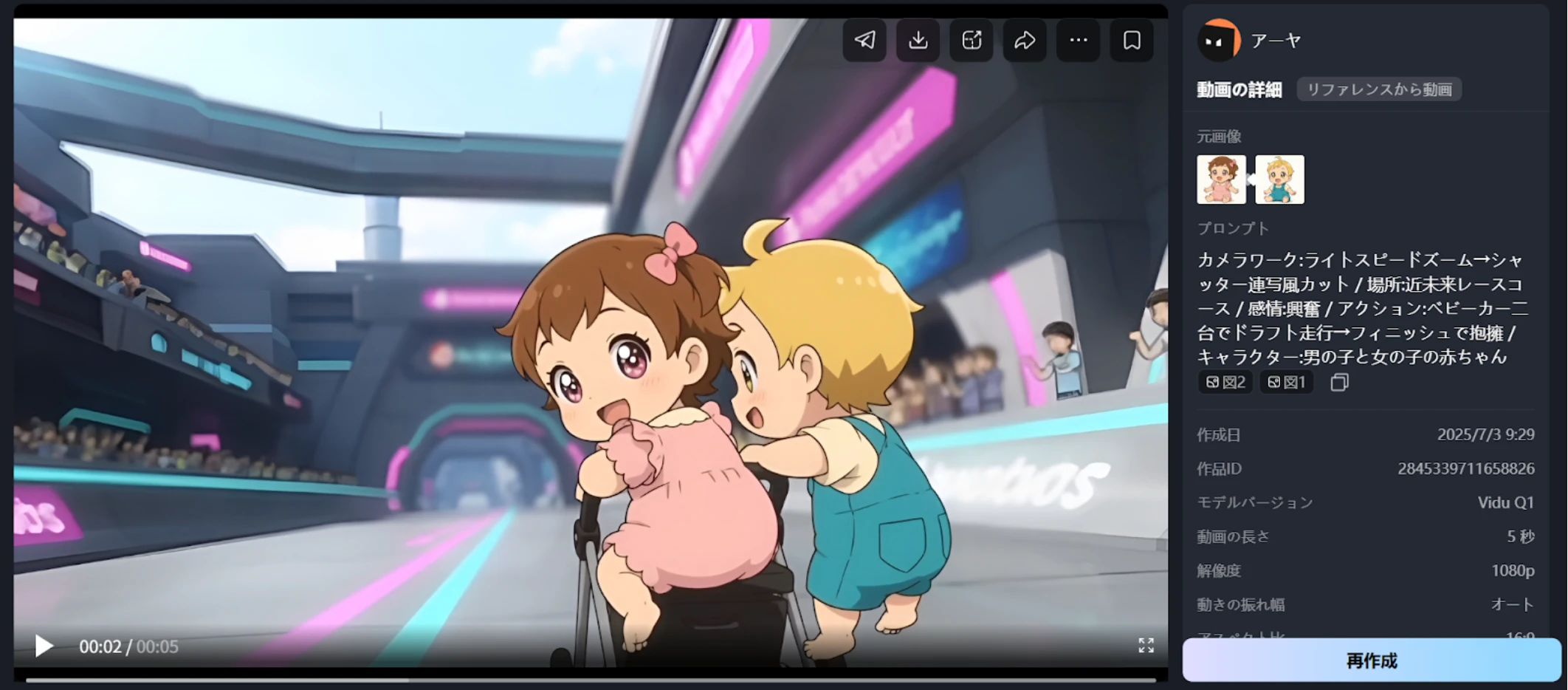
Prompt:
- Camera work: Lightspeed zoom → shutter-burst style cuts
- Location: Near-future racetrack
- Emotion: Excitement
- Action: Two strollers drafting → embrace at the finish line
- Characters: Baby boy and baby girl [@image 2][@image 1]
Part 4. Vidu Q1: Current Capabilities and Future Expectations
So far, we've looked at the concrete production process using Vidu Q1's reference feature. Finally, I'd like to objectively evaluate its performance and consider its future potential.
Is Commercial Use Feasible? Current Limitations and Countermeasures
Some of you might be thinking, "At this quality, isn't it already usable for work?" From my personal perspective, I feel that "under limited conditions, commercial use is almost within reach."
As revealed during the production of "Two Babies," the character consistency, expressive range, and smooth motion set Vidu Q1 apart from traditional AI video generation tools. It could become a powerful asset for short-form content such as social media animations, web ads, or VTuber OP/ED sequences.
However, I must honestly acknowledge that failures do still occur occasionally.
Failures tend to appear in cases such as:
- Complex actions: Running, dancing, fighting—any full-body, high-intensity motion
- Precise hand movements: Grabbing, pointing, or other fine finger gestures
- Dynamic camera work: Complex movements that circle around or follow characters
Leaving these challenging elements entirely to AI often results in unnatural output.
A practical countermeasure is "collaboration with AI." For example:
- Let Vidu handle what it excels at, such as facial expressions or upper-body motion.
- Handle the more complex actions manually or with other tools.
By treating AI not as an all-powerful magic solution but as a skilled tool that optimizes part of the workflow, it becomes possible to achieve both commercial-level quality and efficient production speed.
Hopes for Further Evolution: Features We'd Like to See in Vidu
Vidu Q1 is already an amazing tool, but as creators, we naturally hope for even more. Two features, if implemented in future updates, could dramatically increase creative freedom:
1. Composition & Pose Reference (like ControlNet) Currently, you can specify characters via reference images, but adding the ability to specify composition or pose would expand creative possibilities. For instance, you could import a simple stick-figure sketch and instruct the AI, "Move this character in this pose." This would allow precise execution of intended actions and camera angles, dramatically increasing freedom in animation production.
2. Image-to-Image from Reference Images Currently, Vidu generates videos from text or reference images. Adding the ability to generate still images with slight variations (i.e., Image-to-Image) would make workflows more granular and precise. For example, you could first generate a still image of the character smiling and then use it as a new reference to create the animation.
With these additions, Vidu could evolve from a simple video-generation tool into a comprehensive visual content creation platform. I eagerly look forward to future updates.
Part 5. FAQs About Vidu Q1
Q1: What is Vidu Q1 and how does it work?
A: Vidu Q1 is an AI video generator that creates high-quality 2D anime using reference images and text prompts. It preserves character consistency, interprets expressions, and animates multiple characters with smooth motion.
Q2: Can Vidu Q1 be used for commercial purposes?
A: Yes, Vidu Q1 can be used for commercial projects under certain conditions. It is especially effective for short-form content like social media animations, web ads, and VTuber OP/ED videos, though complex actions may require additional manual work.
Q3: How do I prepare reference images for Vidu Q1?
A: For best results, use clear, high-resolution images with simple backgrounds. Flat, cel-style coloring works best for 2D anime. Optional variations in angle (front, side, back) can improve control but are not always necessary.
Q4: What types of animations can I create with Vidu Q1?
A: You can create diverse 2D anime scenes including expressive facial emotions, multi-character interactions, dynamic actions, and imaginative environments, all while maintaining consistent character designs.
Q5: How does Vidu Q1 handle multiple characters in one scene?
A: Vidu Q1 accurately animates multiple characters interacting in a scene, maintaining their individual features and preventing blending or disappearance, thanks to the high-resolution reference feature.
Q6: How can prompts improve AI animation quality in Vidu Q1?
A: Carefully crafted prompts specifying camera work, location, emotion, and actions guide the AI to generate intended scenes accurately. Using prompts alongside reference images ensures expressive and consistent character animation.







